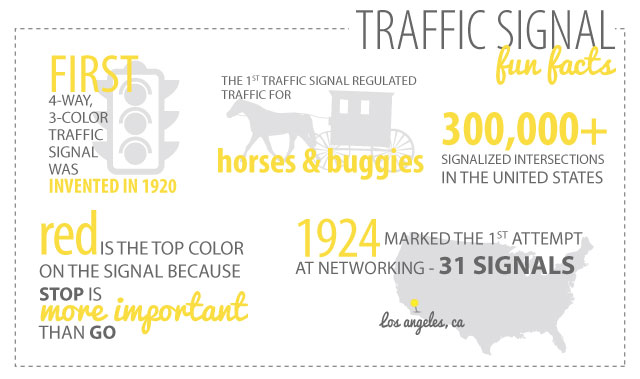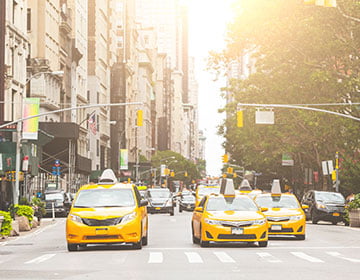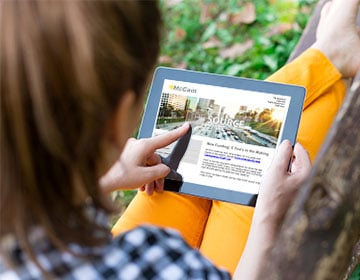Considered a fine art by some and a pain in the neck by others, signal timing and coordination involves sophisticated optimization models, algorithms, and a complex roadway infrastructure. But, the reality is, most people only truly care about signal timing when their light is red.
|
So, here are a few fun facts and FAQs to help you better understand that cursed red light, and maybe you won't be too hard on it the next time it changes on you. |

The Curse of the Red Light
A look at 3 basic questions we've all had
Q: Why does the light take so long to change?
You've been there, we all have, waiting for the light to turn green while the intersection is a scene from an old  western movie (cue tumble weeds and dust clouds). No cars are crossing the intersection, yet you are still stuck at the red light. WHY?
western movie (cue tumble weeds and dust clouds). No cars are crossing the intersection, yet you are still stuck at the red light. WHY?
 western movie (cue tumble weeds and dust clouds). No cars are crossing the intersection, yet you are still stuck at the red light. WHY?
western movie (cue tumble weeds and dust clouds). No cars are crossing the intersection, yet you are still stuck at the red light. WHY?In a coordinated system the signal timing for the main street phase is fixed and will service that time whether cars are present or not, regardless of the volume. If you're on a side street waiting for the light to turn green, and no cars are crossing, you will have to wait until the main street phase has been completed.
Now, if you're traveling on a main street, and you still feel like the lights take forever to change, that's due to the preset signal timings and the minimum time requirements set to service each phase.
Q: Why was that green light so short?
Generally, when a signal phase is short it's because of an unforeseen cause like a driver not paying attention, an emergency vehicle preemption, or just too many cars on the road in which the signal cannot clear each movement as normally expected.
There is also the possibility of an issue with the detector or a system flaw that needs to be addressed by the city traffic engineer.
Q: Why do I keep hitting red lights?
Coordinating signals can be quite the undertaking for traffic engineers, especially on two-way streets where the signals are irregularly spaced. In some cases, it becomes physically impossible to provide good coordination simply due to the spacing of the intersections and vehicle speeds. A possible solution for cities and agencies would be the use of an adaptive signal control system. This system would account for the many variables and environmental factors, and provide an efficient timing plan that adapts to an ever changing environment.
Technical Signal Timing Questions Answered
Common signal timing questions answered
 What is a "force-off"?
What is a "force-off"? Force-off is the point during the cycle when the current phase's green interval ends and proceeds to yellow then red clearance. It is not a max or gap out, but rather in response to the amount of split time it gets, hence the term "force-off."
What are the pros and cons of double cycling?
Pros: It's perfect for smaller intersections in a corridor of heavier intersections with relatively light movements on the side streets that can be served quickly, such as neighborhood streets.
Cons: The location of the double cycling intersection could present an issue by possibly interfering with the progression of the main street platoon. Therefore, you would have to carefully consider location to avoid affecting the green band. Also, if there are side street peds during each cycle, it can cause delay for the main street phases.




